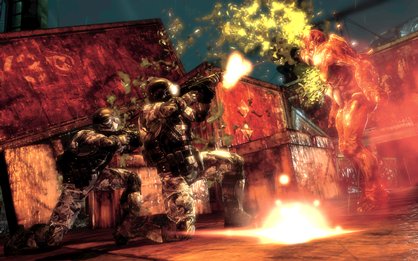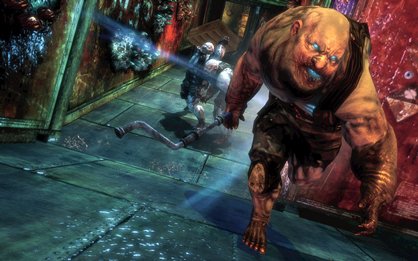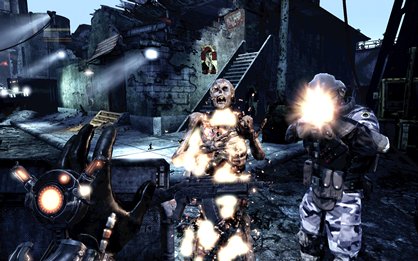Singularity's multiplayer aims to be different
The common FPS rules don't apply
As everybody knows how Singularity’s single-player is going to work (turn enemies into dust, fix collapsed staircases, send busted crates back in time and break them open for ammo) we’re not going to recap everything we’ve said in previews past. Multiplayer, however, is an entirely different beast, and one that up until now has been a complete mystery. Wondering how Raven intends to set their game apart from bandwidth-guzzling Activision stablemate Call of Duty? Step forward Lead Game Designer Dan Vondrak.

The premise, he assures us, is simple. It’s an asymmetrical adversarial mode, where one side takes control of Russian soldiers armed with guns and Time Manipulation Devices and the other is in charge of Creatures. (We’d be shocked if Dead Space’s multiplayer concept ends up a million miles away from this – Singularity’s Creatures are even controlled, we’re informed, through a third-person camera.) “We wanted to provide something fresh with multiplayer,” Vondrak wisely justifies, knowing a regular offering would get swallowed up in the Halo/CoD crowd. “To go beyond the basic FPS multiplayer experience.”
Each Creature is unique: some are brutish tanks, while others can climb on walls or possess the bodies of the opposing team. The obvious comparison would be to say the mode is L4D’s Versus all over again, but that lazy reference would also be misleading. Singularity’s offering seems to retain features synonymous with more traditional player versus player modes, skipping a (much) more complex A-to-B story of survival in favour of familiar deathmatch territory.

Fittingly for a game all about playing with time, Raven has been looking at what the future might hold. “The Universe we’ve created is really diverse,” muses Vondrak, suggesting protagonist Nate Renko’s tale is but a fraction of the full Singularity story. “So many stories could be told and it would be great to get a chance to explore some of the pieces we only touched on in this first Singularity.”
And it seems Raven founder Steve Raffel was the catalyst. “The idea of exploring an abandoned place where a mysterious accident has happened – and then discovering that story through time manipulation – came from Steve. The mechanics started out with a small set of core features and they started to explode as you combined them.”

You should by now be more than familiar with the flux capacitor-powered time glove wielded by hero Nate Renko. But the mitt wasn’t always going to be a gauntlet. “The original Time Manipulation Device was a gun and we had no other weapons,” reveals Lead Designer Dan Vondrak. “While play-testing during the first part of development we really missed having the real world guns to fire, ammo to find, more guns to discover – and it was crucial to us to allow a quick mix of TMD and gunplay – so that’s why the glove was chosen.”
Sign up to the GamesRadar+ Newsletter
Weekly digests, tales from the communities you love, and more


